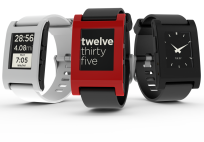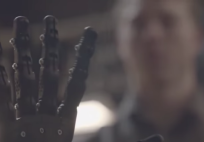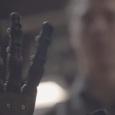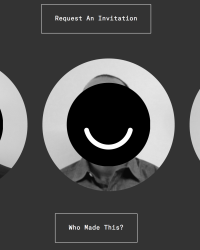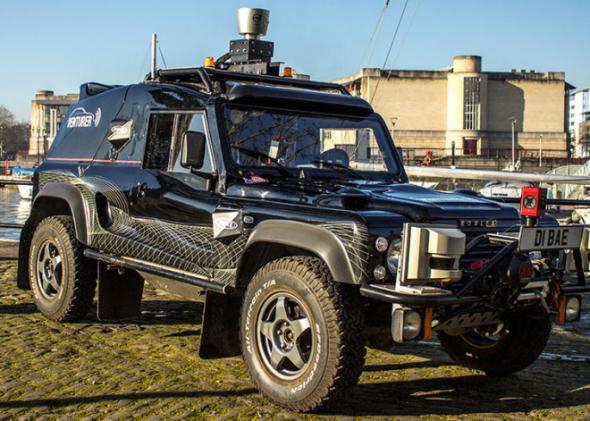
Self-driving cars are getting tested on the streets of the United Kingdom. Government officials have made it legal to operate driverless cars during three £19million trials.
Drivers of self-driving vehicles, who henceforth will be known as “vehicle users,” can now spin their seat around to speak to people in the back, eat a burger, drink tea, read a book, talk, text, or surf the web on their hand-held phones while the vehicle is in autonomous operation.
Furthermore, many people who weren’t able to drive in the past, will be able to drive. Motorists wont even need a license to operate an autonomous vehicle.
Ministers presented their plans to hold the tests on UK roads until people will be able to buy them in 2020.
The 190-page report, titled, The Pathway to Driverless Cars, reads that vehicle users will eliminate 235 hours of driving time out of their schedules. The Department for Transport released the report after conducting a six-month probe on the use of driverless cars.
“For the first time since the invention of motor vehicles, the ‘driver’ will be able to choose whether they want to be in control, or to hand the task of driving over to the vehicle itself,” the report reads. “This represents a major opportunity – allowing drivers to safely use the journey time however they wish, from reading a book to surfing the web, watching a film or just chatting face to face with other passengers.”
The report even urges car makers to use the ability to text, call, talk, and eat and drive (or use, rather) as selling points when marketing autonomous vehicles.
The report also argues that car makers may have to bear more legal responsibility than the human vehicle user who may not have his complete attention on the road and surroundings.
For instance, a vehicle user would potentially be accountable for an accident if the car is in manual mode. Nonetheless, if the car is operated autonomously, the car maker may be liable.
So does that mean you should pour down a few shots of Bourbon while on your commute back home? As long as the car’s driving, what could go wrong?
The report reads that a vehicle user can’t drink over the legal alcohol limit at this time because it is against the law to drink and drive a vehicle a motorist is “in charge” of rather than “in control of.”
The report, however, highlights that although vehicle users can’t drink while operating a driverless car now, they may be able to in the future. Drinking vehicle users may be classified as the existing unfit drivers of conventional cars that will be able to operate driverless cars.
The report further emphasizes that UK law does not stop driverless cars from being tested. Thus, ministers made it explicitly clear that “driverless vehicle can legally be tested on public roads in the UK today.”
The ministers’ objective is to make Britain a global leader in the operation of autonomous vehicles.
Test drivers wont need to be certified; they don’t have to have permits. But they must ensure that the driverless car is being operated safely on UK public roads. The report reads that driverless cars should comply with Road Traffic Act 1988 by being alert while operating with excellent skill and thoughtfulness and care for others; these are the same requirements to which humans must comply; autonomous vehicles will be held to a higher standard.
Because the report finds that driverless cars will be bought because users wont have to pay attention to the road and their surroundings, the vehicles must be just as aware of pedestrians, cyclists, changing speed limits, and unexpected conditions as a human driver must be.
The report reads, for instance, if a pedestrian, who wants to see how the brakes react, jumps in front of a driverless car while in motion, or if another car with the same motive cuts in front of a self-driving car, the driverless car has to know how to react perhaps even better than a human would.
Qualified drivers with manual override controls have started the three official trials in Milton Keynes and Coventry, Greenwich and Bristol. They all must strictly adhere to the rules of the road.

Government officials promise to make it as easy as possible to let utterly driverless cars be released to the market. They promise to regulate their use with a “light-touch.”
Moreover, as driverless cars will drive closer to each other to reduce traffic jams by occupying less space on the road, “tailgating” may have to be regulated differently. Tailgating wont be a hazard when autonomous vehicles do it to drive more efficient in single or multiple file units.
Transport minister Claire Perry wants the UK to be among the first hubs to foster development of autonomous technology. She sees it as a way to attract global investment and freeing parents of the need to drive their children to school.
“I have a vision of the school run driverless car where you wave your children off to school and they come back at 3:30,” Mrs. Perry said.
Government officials have made it clear that they want vehicles made available to everybody, such as children who need to be driven to school or a park, seniors and disabled people who can’t drive, 31 percent of woman who don’t have a driver’s license, and people who just don’t want to drive.
The report also contends that getting self-driven vehicles insured wont be a problem because human error causes 90 percent of accidents.
LUTZ Pathfinder ‘pods,’ built by Jaguar Land Rover, are driven at 7 mph at Milton Keynes and Coventry. Oxford University’s Mobile Robotics Group installed 19 sensors and self-navigation technology into each of these pods.
Britain’s Transport Research Laboratory (TRL) and the RAC Foundation is leading the Greenwich trials of the Meridian electric shuttle autonomous vehicles traveling at 12 mph that can carry up to seven people.
The BAE-modified Bowler Wildcat vehicle (that is based on a Land Rover Defender) and a pod will be tested in Bristol city centre to gauge reactions of drivers, other road users, and pedestrians.




